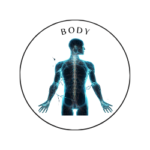 Mind
Mind
- Digital and Modern Well-being
- Mental Health and Emotional Well-being
- Mind-Body Connection and Holistic Health
- Parenting and Family
- Personal Growth and Development
- Relationships and Social Well-being
- Stress and Relaxation
- Therapeutic and Creative Practices
- Trauma and Recovery
- Work, Productivity, and Discipline
 Body
Body
 Fitness
Fitness
 Food
Food
 Beauty
Beauty
Mindful Living

Mindful Living: Techniques to Embrace the Present
In today’s fast-paced world, it’s easy to become overwhelmed by the chaos of daily life. The constant barrage of notifications, responsibilities, and distractions can make it challenging to be present in the moment. Mindful living offers a powerful antidote, encouraging us to slow down and embrace the present. By practising mindfulness, we can enhance our mental well-being, reduce stress, and improve our overall quality of life. In this blog post, we’ll explore the principles of mindful living and provide practical techniques to help you incorporate mindfulness into your daily routine.
What is Mindful Living?
Mindful living is a lifestyle that focuses on being present and fully engaged in the moment. It involves cultivating awareness of our thoughts, feelings, and bodily sensations without judgment. By practising mindfulness, we can develop a deeper understanding of ourselves and our surroundings, fostering a sense of peace and contentment.
The Benefits of Mindful Living
Practising mindfulness can lead to numerous benefits, including:
- Reduced Stress: Mindfulness helps us manage stress by allowing us to respond to challenges with greater calmness and clarity.
- Improved Focus and Concentration: Being present in the moment enhances our ability to concentrate and increases productivity.
- Enhanced Emotional Well-Being: Mindfulness can lead to greater emotional resilience, helping us navigate difficult emotions and cultivate positive ones.
- Better Relationships: By being fully present with others, we can deepen our connections and improve our communication skills.
- Increased Self-Awareness: Mindfulness encourages self-reflection and a better understanding of our thoughts, behaviours, and triggers.
Techniques to Embrace Mindful Living
1. Mindful Breathing
One of the simplest and most effective ways to cultivate mindfulness is through mindful breathing. Here’s how to do it:
- Find a Quiet Space: Choose a comfortable and quiet spot where you can sit or lie down without distractions.
- Close Your Eyes: Gently close your eyes or lower your gaze to minimise visual distractions.
- Focus on Your Breath: Take a deep breath in through your nose, allowing your belly to rise. Hold for a moment, then exhale slowly through your mouth.
- Notice Your Thoughts: As you breathe, thoughts may arise. Acknowledge them without judgment and gently bring your focus back to your breath.
- Practice for a Few Minutes: Start with a few minutes each day and gradually increase the time as you become more comfortable with the practice.
2. Body Scan Meditation
Body scan meditation helps you connect with your body and release tension. Here’s how to practice it:
- Lie Down Comfortably: Find a quiet place where you can lie flat on your back with your arms at your sides.
- Close Your Eyes: Close your eyes and take a few deep breaths to relax your body.
- Focus on Each Body Part: Begin at your toes and slowly work your way up to the crown of your head. Notice any sensations, tension, or discomfort in each body part.
- Release Tension: As you breathe out, imagine releasing any tension or discomfort in each area.
- Take Your Time: Spend a few moments on each body part, allowing yourself to fully experience the sensations.
3. Mindful Eating
Mindful eating encourages you to savour your food and appreciate the nourishment it provides. To practise mindful eating:
- Eliminate Distractions: Turn off your phone and TV, and sit down at a table to eat your meal.
- Observe Your Food: Take a moment to look at your food. Notice the colours, textures, and aromas.
- Slow Down: Take small bites and chew your food slowly. Pay attention to the flavours and how the texture changes as you chew.
- Listen to Your Body: Tune in to your body’s hunger and fullness cues. Stop eating when you feel satisfied, not stuffed.
4. Nature Walks
Spending time in nature can enhance mindfulness and well-being. Here’s how to practise mindful walking:
- Choose a Natural Setting: Find a park, garden, or nature trail where you can walk peacefully.
- Focus on Your Senses: As you walk, engage your senses. Notice the sights, sounds, and smells around you.
- Feel Your Feet: Pay attention to the sensation of your feet touching the ground with each step. Notice how your body moves.
- Breathe Deeply: Take deep breaths, inhaling the fresh air and exhaling any tension or stress.
5. Gratitude Journaling
Practising gratitude can shift your focus from what’s lacking to what’s abundant in your life. To start a gratitude journal:
- Set Aside Time: Dedicate a few minutes each day to reflect on your day.
- Write Down Three Things: List three things you are grateful for. They can be big or small—anything that brings you joy.
- Reflect on Each Item: Take a moment to reflect on why you’re grateful for each item and how it impacts your life.
Tips for Incorporating Mindful Living into Your Daily Routine
- Start Small: Begin with a few minutes of mindfulness each day and gradually increase the time as you feel more comfortable.
- Create Reminders: Use sticky notes, phone alerts, or reminders to prompt you to pause and be present throughout the day.
- Practice Regularly: Consistency is key. Aim to incorporate mindfulness practices into your daily routine, whether through meditation, mindful eating, or nature walks.
- Be Patient: Mindfulness is a skill that takes time to develop. Be patient with yourself and approach the practice with an open mind.
Conclusion
Mindful living is a transformative practice that encourages us to slow down and embrace the present moment. By incorporating mindfulness techniques into our daily routines, we can enhance our mental well-being, reduce stress, and cultivate deeper connections with ourselves and others. Start with small steps and be patient with your progress; the journey towards mindfulness is as rewarding as the destination. Embrace the present, and discover the profound peace that comes with living mindfully.
